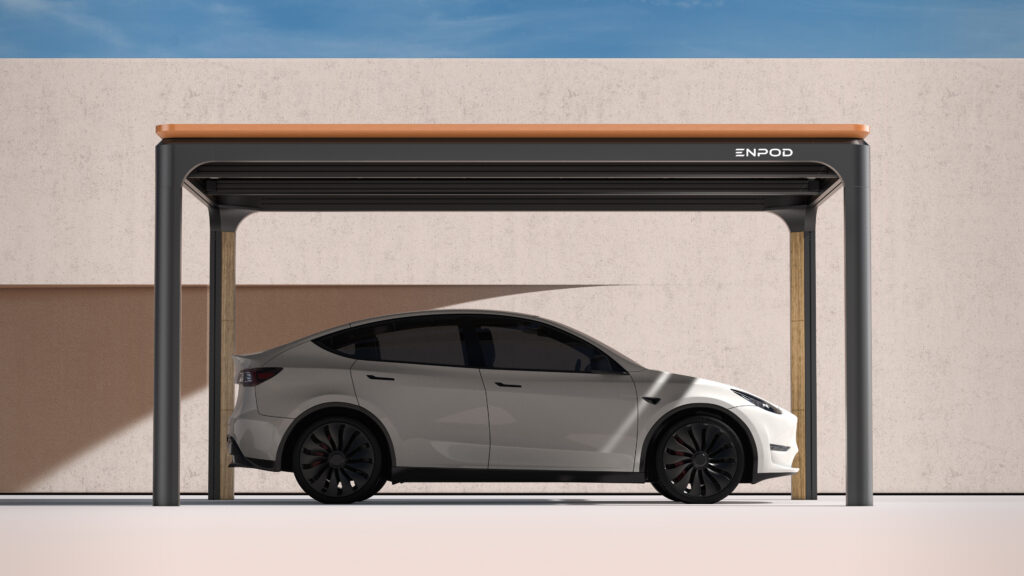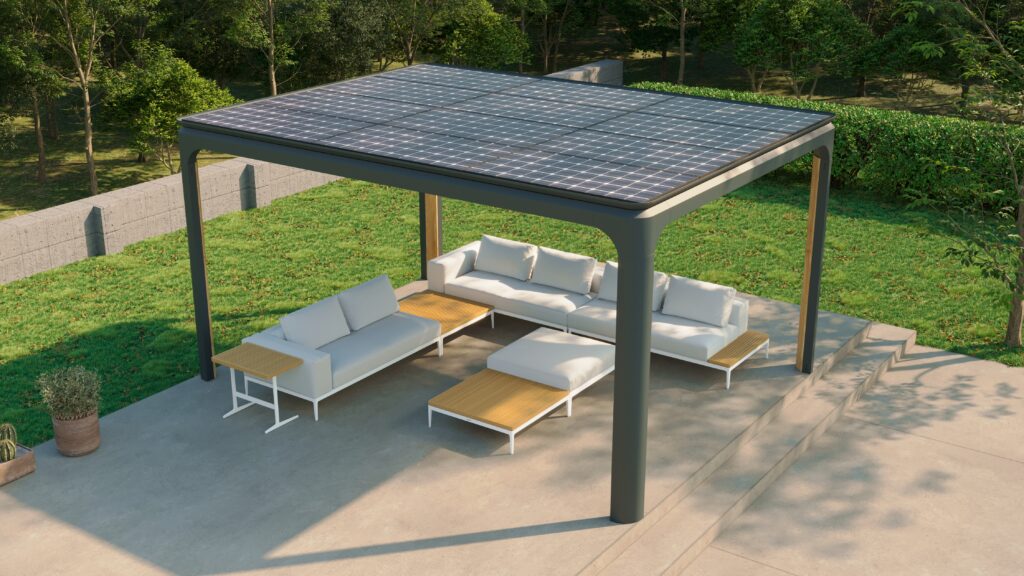By Paris Santiago, FAU Center for Environmental Studies
The following Q&A was conducted with Aleksandr Bernhard, founder of Pavilion Solar. The Miami-based company produces canopies covered with solar panels for homes, which can be used as a carport or pergola for outdoor living areas while generating electricity. This interview has been edited for length and clarity.
Where did the idea for Pavilion Solar begin?

It actually started when I was going solar myself. I wanted to put solar panels on my roof and had a lot of issues. The first time I tried, my roof was too old, which is a pretty common problem. Solar installers won’t install solar panels on a roof if it’s getting close to the end of its life, usually within about five years. So, I had to wait until I got a new roof – incidentally after Hurricane Irma – so I took the opportunity and wanted to install solar panels.
The other issue was that I have three beautiful trees in front of my house, which shade most of the roof during the winter months. Most solar installers didn’t want to do the installation because I had a lot of shade and wouldn’t be able to produce that much electricity. I had to look at alternate ways to go solar, and I started talking to solar installers and seeing what else was out there in terms of a ground-mounted system, which is really the only alternative if you can’t put it on your roof.
Everything out there was not attractive and not something you’d want in your house since they were very industrial-looking (and) also very expensive and not compatible with Florida building codes. In Florida right now, if you can’t put solar panels on your roof, there are very few if any real alternatives out there.
Could you expand upon reasons one might opt for a solar pavilion over traditional installations?
There are a couple of reasons. There was a study I discovered while doing market research that showed almost half of all U.S. homes aren’t eligible for rooftop solar because of some condition with the roof. Either the roof is too old, too small — which basically means you can’t put enough solar panels up there to really offset any meaningful amount of electricity — (or) it has too much shade, isn’t facing the right direction, a lot of different reasons.
In Florida, we have a very specific reason: A lot of people don’t want to put solar panels on their roof because you have to put holes in the roof to mount them. In a place where wind insurance is a sensitive subject and some insurance policies are being dropped because people have solar panels on their roof, this is something people who have ordered our EnPod (solar canopy) have talked to us about. Sometimes there is an aesthetic reason, since some people don’t like how solar panels look on a roof and want to go about it a different way.
What are some of the climate benefits of solar pavilions?

You’ll see a lot of the same benefits as regular solar panels such as offsetting energy use and carbon emissions, net-metering in Florida that lowers cost on your electricity bill. For instance, I have electric cars, and when I charge my cars, I try to do it when I have enough solar exposure on the panels so I am charging them with solar energy.
A lot of people who are buying electric cars now might have the idea that they’re offsetting carbon emissions from a traditional vehicle, which is true to an extent. But if you’re charging your vehicle off our grid here in Florida that is powered by natural gas, (that) is better than coal but still produces a lot of carbon.
If you’re charging your electric vehicles or powering anything in your house from solar panels, you’re offsetting that carbon emission. There is a carbon footprint of manufacturing solar panels, but there is still a large net benefit over time in terms of how much carbon is avoided by going solar. Our solar pavilions are made here in the U.S., so our carbon footprint for our production is as low as it can be for something like that.
In terms of transportation, some of the manufacturing is here in Florida, so we are very conscious on the manufacturing side to lower our carbon footprint when possible. Seventy percent of the aluminum we use is recycled aluminum as well, which has a dramatically lower impact than the use of virgin aluminum.
Are there future product ideas beyond the solar pavilions?
Right now, the EnPod can be tied in to a battery, so you can have an isolated microgrid. A lot of people don’t know that if the power goes out, solar panels stop producing energy unless you have a battery or microgrid. This is important in Florida for when we have hurricanes or power outages. You can keep the power on by pairing the EnPod with batteries.
We are looking at ways to integrate the batteries into the structure itself so it becomes a kind of stand-alone power plant, something that can withstand hurricanes. The other thing we’re looking at is vehicle-to-home and vehicle-to-grid charging, to be able to use the batteries in your electric vehicle as a backup via the solar panels charging on the EnPod. …
What are some of the future goals for Pavilion Solar?
We’ve had great success in terms of already having people ready to install (solar pavilions), but we really want to change the game in residential solar. There are millions of people that want to go solar, and not just in Florida but in other states as well. Our product is designed around hurricane-prone areas and to be code-compliant in Florida, since Florida’s building code is the strictest one out there.

Our future plan is to deploy these as much as possible starting in Florida, but then to other hurricane-prone states such as Texas. Florida and Texas are the top two markets for residential solar after California. The market here is huge, and we designed our product around feedback we get from solar installers, and the feedback has been universally positive in terms of the market need for something like this.
We really want to give people another option if they can’t go solar on their roof or prefer not to, whether that’s a pergola in their backyard or a carport, or both. Potentially, we could even expand outside of the U.S. as well.
Currently, our company is competing in the American-Made Solar Prize (competition administered by the U.S. Department of Energy). We’re the only company from Florida that is in the final of three rounds. We’re going to be doing our pitch in September at the RE+ renewable energy conference in Anaheim, so we encourage anyone to keep updated on our LinkedIn page for that.
The important thing about the EnPod is that we want it to be accessible to as many people as possible. Any solar canopy system is going to be more expensive than just rooftop solar since you have the structure underneath it. Ours, on a cost-per-watt basis, is on the lower end of other products out there and is really the only product that you can install in Florida that will be compliant with the building code.
This Q&A was conducted by Paris Santiago, a graduate research assistant at Florida Atlantic University’s Center for Environmental Studies who recently received a master’s degree in the environmental science program. The center manages The Invading Sea.
Sign up for The Invading Sea newsletter by visiting here. If you are interested in submitting an opinion piece to The Invading Sea, email Editor Nathan Crabbe at ncrabbe@fau.edu.




I like your FAI program. I worked with your university back in 1998 and conducted a workshop on using solar in a disaster. I work for UCF – Florida Solar Energy Center. Your article is good, but there are already 4 companies that do what he does. At FSEC, we test and evaluate hardware, solar and renewable systems. Have you been to FSEC?
Bravo ! This is the innovation that is needed . We need more.